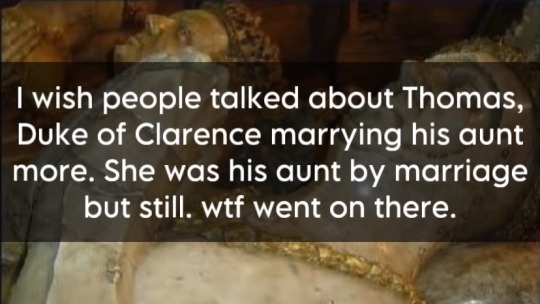#thomas duke of clarence
Explore tagged Tumblr posts
Text
Here’s a more grounded historical hypothetical before we get into the truly ridiculous ones:
As always there will be rounds to this poll so I will try to cover more historical figures from around this era. I just tend to start around the War of the Roses/The Tudors because they’re my favourite time periods.
#Tumblr#tumblr poll#tumblr polls#poll#polls#history polls#Historical hypotheticals#historical hypothetical#history hypothetical#history hypotheticals#war of the roses#the wars of the roses#english history#Henry V#Thomas Duke of Clarence#humphrey duke of gloucester#john duke of bedford#Henry vi#margaret of anjou#cecily neville#richard plantagenet#richard duke of york#edmund beaufort#edmund duke of somerset#richard neville#Earl of Warwick#Humphrey Stafford#Humphrey Duke of Buckingham#henry percy#Henry Earl of Northumberland
34 notes
·
View notes
Text
Henry V
I have never made it a secret that Dan Jones is one of my favourite authors/historians. He’s an autobuy author for me at this point, so it was a no brainer that I was going to get a copy of his latest release. The exciting part about the timing was that my trip to England in September 2024 overlapped with the UK book tour, so I’ve now actually met him and had a bit of a chat which is always a…
#15th century#Anglo-French Relations#Battle of Agincourt#Biography#Book Review#Books#Charles VI#Dan Jones#England#English History#France#French History#Henry IV#Henry Plantagenet#Henry V#History#Humphrey Duke of Gloucester#John Duke of Bedford#Nonfiction#Plantagenet#Plantagenet Era#Thomas Duke of Clarence
0 notes
Text
A huge difference between York and Lancaster bro's .
“[Edward IV]’s was a sadly dysfunctional family. Both his brothers betrayed him; in exasperated revenge he judicially murdered the elder; the younger without provocation in turn destroyed his children. Crowland recalled that the brothers possessed such talents that, had they been able to avoid discord, such a triple bond could only have been broken with the utmost difficulty. Yorkist disharmony stands in contrast to the bond between Henry V and his brothers, and the evident commitment of the two surviving brothers to his infant heir, Henry VI, after his death in 1422.”
— A. J. Pollard, Edward IV: The Summer King (2016)
#edward iv#henry v#siblings#thomas duke of clarence#john duke of bedford#humphrey duke of gloucester#george suke of clarence#and none other than infamous and polarising Richard iii
47 notes
·
View notes
Text
"The late medieval nobility were not always gleefully ganging up on the king. On the contrary, a lord with pretensions of dominance would find his severest critics among his fellow nobles, who seem on the whole to have considered an inept king infinitely preferable to a colleague wielding excessive power. The isolation of Richard of York in the 1450s can be paralleled in the fourteenth century by Thomas of Lancaster, whose assumption of dominance in opposition to Edward II was much disliked, in spite of the king's own unpopularity."
-Rosemary Horrox, "Personalities and Politics", The Wars of the Roses (Problems in Focus), edited by A.J Pollard
#this chapter also points out how Warwick and Clarence found almost no noble backing outside their own immediate circle when they#imprisoned Edward IV - and were so demonstably unable to represent royal authority that they were forced to free him#I wanted to add that here originally but since the situation wasn't exactly the same as the two mentioned above I left it out#richard duke of york#henry vi#edward ii#thomas of lancaster#my post#queue
18 notes
·
View notes
Note
I’ve kinda been interested in learning about royal scandals and drama from history (like could be anywhere in history besides the Princess Diana, Prince Charles, Prince Harry & Meghan stuff since there’s lots of info on that), but every time I try to look it up I just get random websites like “Top 10 Craziest Royal Scandals”. Any source or particular scandal/drama that you’d recommend looking into/starting with?
Here are just a few:
Margaret Campbell, the Dirty Duchess
Catherine of Valois marries Owain ap Tudur
Jacquetta of Luxembourg marries Richard Woodville
The Duke of Cumberland "murders" his valet
Empress Alexandra Feodorovna's letters to Rasputin get leaked
Albert Victor, Duke of Clarence and Avondale gets caught up in both the Jack the Ripper and Cleveland Street scandals.
The death of Madame Araujo and Tsar Alexander I's cover up of her death
The Black Masses and Madame de Montespan
The "poisoning" of Henriette, Duchess d' Orleans
The exile of Julia, daughter of Augustus.
Lady Seymour Worsely
The disappearance of Lord Lucan
The death and coronation of Inez de Castro
The death of Thomas Overbury
Affair of the Poisons
George IV and Maria FitzHerbert
Lola Montez
The death of Ludwig II
The Banquet of Chestnuts
The marriage of Archduke Franz Ferdinand of Austria and his wife, Sophie, Duchess of Hohenberg
The exploits of Sabina, Empress of Rome
The fall of Sejanus
The marriage of Victoria Melita and Grand Duke Kirill
The imprisonment of Sophia Dorothea of Celle and the death of Königsmarck
The loves of Catherine the Great
The marriage of Louis and Edwina Mountbatten
The death of Amy Robsart
The Mayerling Incident
The Kotze Scandal
The death of Infante Alfonso of Spain
The Tour de Nesle Affair
Peter Townsend
George, Duke of Kent and the girl with the silver syringe
Affair of the Diamon Necklace
Wallis Simpson and Herr Ribbentropp
There's a great podcast that just focuses on scandals on Spotify, it's Trashy Royals, you should give it a listen!
50 notes
·
View notes
Photo
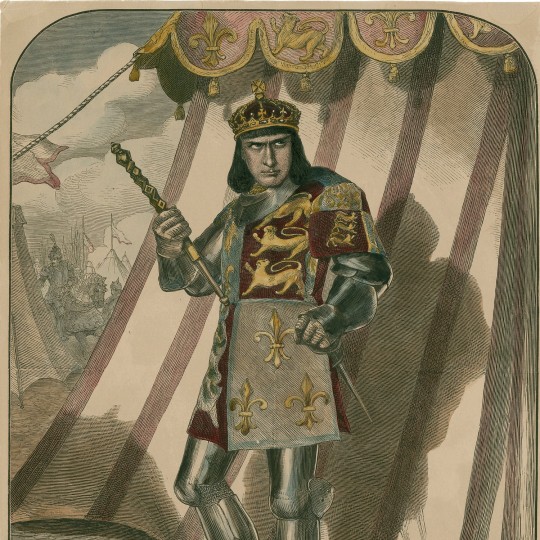
The Tragedy of Richard III: Shakespeare's First Great Villain
The Tragedy of Richard III, often referred to as simply Richard III, is a history play by William Shakespeare (1564-1616), probably written around 1592-94. It is the fourth and final installment of the 'first tetralogy' of Shakespeare's history plays which, along with the three parts of Henry VI, chronicle the Wars of the Roses (1455-1487), a series of bloody dynastic conflicts in England that pitted the houses of York and Lancaster against one another. Richard III picks up toward the end of the conflict and follows the Machiavellian rise of the hunchbacked Richard, Duke of Gloucester, as he schemes and murders his way to the English throne, eventually becoming King Richard III of England (r. 1483-1485).
Background & Context
At the time that Richard III was written, history plays were quite popular in London – Shakespeare, still in the early part of his career, would have been encouraged by the success of his Henry VI plays to continue the story where he left off, with the death of the Lancastrian King Henry VI of England (r. 1422-1461; 1470-1471) and the reacsension of the Yorkist claimant King Edward IV of England (r. 1461-1470; 1471-1483). Richard, Duke of Gloucester, is the youngest brother of King Edward and suffers from several physical deformities, including a twisted spine and a withered arm. According to Richard himself, these deformities have caused him a life of mockery and unlovability, and have made him decide to "prove a villain"; from his very first appearance in Act I, he stops at nothing to claw his way to the throne, ordering the deaths of his brother Clarence, the Princes in the Tower, and his wife.
Richard takes the audience along for the ride – early in the play, he addresses them and takes them into his confidence, winning them over with his wit and good humor. Indeed, Richard plays the part of 'Vice', a character that expresses sinister intentions through comic charm, common to the morality plays of medieval literature – in the words of scholar Peter Holland, Richard's charm makes it "almost impossible for spectators to maintain their moral ambiguity" (906). Only after he takes the throne does Richard lose the audience's sympathy; as he becomes more paranoid and isolated, so, too, does he stop addressing the audience, thereby removing them from the spell of his charm.
The depiction of Richard III as a deformed villain – albeit a charming one – was not original to Shakespeare. In the decades after the defeat and death of the historical Richard III at the Battle of Bosworth Field (1485), it was in the best interest of the Tudor dynasty that had supplanted him to paint him as a bloodthirsty tyrant. The Tudors, whose rise to power marked the end of the Wars of the Roses, propagandized their victory over Richard as a battle of good versus evil, their victory at Bosworth a "divinely sanctioned deliverance of the English nation" (Bevington, 263). It was in the best interest of contemporary chroniclers to align their own depictions of Richard with this Tudor propaganda.
The villainization of Richard began with Sir Thomas More and his work The History of Richard III, and it was propagated in Edward Hall's The Union of the Two Noble and Austere Families of Lancaster and York (1547) as well as in Richard Holinshed's The Chronicles of England, Scotland, and Ireland (1577). Shakespeare, who drew on all three of these works, would have been unable to resist the delightfully devilish image of Richard that they had created. Many of the myths about Richard III that persist in the modern imagination were immortalized by Shakespeare, such as the idea that he had his nephews, the Princes in the Tower, killed, or that he was as deformed as he is depicted. Shakespeare's play aligns with the Tudor version of history by depicting the Earl of Richmond – the future Henry VII of England, founder of the Tudor dynasty – as a heroic force of good, who defeats Richard, the "demonized epitome of evil" (Holland, 904). But whatever liberties the chroniclers and Shakespeare may have taken with Richard's character, the villain they have created – a violent, paranoid, authoritarian – comes to life with uncomfortable realism, mirroring several real-life dictators and autocrats.
Read More
⇒ The Tragedy of Richard III: Shakespeare's First Great Villain
25 notes
·
View notes
Text
The link no longer works but the paper can be found here or here (the last link goes directly to the pdf).
“Sigismund’s visit to England began in English-held Calais on 16th April 1416, when he was met by a large and prestigious reception party, including Richard Beauchamp, Earl of Warwick, who was then Captain of Calais Castle. On crossing the channel a few days later, Sigismund made his triumphal progress to London, greeted by more prestigious personages along the route. First by the king’s youngest brother, the Duke of Gloucester, then by Archbishop Chichele in Canterbury, followed by the Dukes of Bedford and Clarence, before finally being met by the Lord Mayor of London. Sigismund was given use of the royal chambers at Westminster Palace, while Henry moved over to the palace of the Archbishop of Canterbury across the river in Lambeth. From the palace Sigismund would have been within walking distance of the abbey, where he would have been able to inspect the tomb of his younger sister (Figs. 5. & 6.).”
– from this article (link is a pdf)

#henry v#emperor sigismund#anne of bohemia#humphrey duke of gloucester#henry chichele archbishop of canterbury#richard beauchamp 13th earl of warwick#john duke of bedford#thomas duke of clarence#historian: m. r. palmer
18 notes
·
View notes
Text

On 22nd March 1421, Franco-Scottish army. under the Earl of Buchan defeated English forces at Bauge in Anjou, France.
Not heard of it? That’s because the history we were taught in school was all anglicized, oh we did get a wee bit about the 100 year war, mainly Agincourt, because the English won that day, or possibly Crecy, another victory for them, Bauge and many other times the English were gubbed are ignored.
Ok you might be wondering why I say a Scottish army, historians all say that the majority of the troops were Scottish soldiers, aye there was a few Frenchmen fighting on “our” side, but this was very much a Scottish victory over an English army.
This all goes down as part of the Auld Alliance, which was signed in 1295 by King John Balliol and Philip IV of France. The Alliance was renewed periodically after that date and by the 1410s it was very much “in play” as Henry V of England initiated the third phase of the Hundred Years War, often known to historians as the Lancastrian War.
In 1418, it was the French Dauphin who called on his Scottish allies for assistance in his efforts to curtail Henry’s depredations after the great battle of Agincourt in 1415. It had to be the Dauphin, or Crown Prince, who sought help from Scotland because the French king, Charles VI, was already showing signs of the mental illness that would eventually see him nicknamed Charles the Mad.
The French aristocracy had split into two factions with many supporting the Duke of Burgundy in his aspirations to take the throne, while many others stayed loyal to the King and the House of Valois, known as the Armagnacs. Increasingly it was the teenaged Dauphin, the future Charles VII, who made all the major decisions for the Valois regime and, faced with the Burgundy alliance with Henry V and the surrender of many of his own forces, he sent for help from Scotland.
The complicating factor at the time was that King James I of Scotland was still a prisoner of the English, albeit that he was part of the royal household of Henry, whom he greatly admired, and he would actually fight with the English army against the French in France in 1420. In charge of Scotland was the Duke of Albany, Robert Stewart, who had become regent when James was first captured by the English in 1406 while en route to France.
There had been no large battles between the Scots and the English since the Battle of Homildon Hill, or Humbleton Hill, in 1402 won by the English, but with England preoccupied with France, Albany no doubt felt it safe to respond positively to Scotland’s oldest ally. By 1419, there was also peace of a sort along the border with England so the Scots could afford to send an army of around 6000 men including men at arms, spearman and archers to serve alongside the remaining French royal army.
Henry V’s of England’s brother, Thomas the Duke of Clarence led 10,000 men south towards the Loire. They set about besieging the castle at Bauge when the Scots were garrisoned, they made contact with them the day before Good Friday. A truce was reached, lasting until Monday, so that the combatants could properly observe the religious occasion of Easter.
The English lifted their siege and withdrew to nearby Beaufort, while the Scots camped at La Lude. However, early in the afternoon of Saturday Scottish scouts reported that the English had broken the truce and were advancing upon them hoping to take them by surprise. The Scots rallied hastily and battle was joined at a bridge which the Duke of Clarence, with banner unfurled for battle, sought to cross. A detachment of a few hundred men under Sir Robert Stewart of Ralston, reinforced by the retinue of Hugh Kennedy, held the bridge and prevented passage long enough for the Earl of Buchan to rally the rest of his army, whereupon they made a fighting retreat to the town where the English archers would be ineffective.
Both armies now joined in a bitter melee that lasted until nightfall. During this time Sir John Carmichael of Douglasdale broke his lance unhorsing the Duke of Clarence; since that day the Carmichael coat of arms displays an armoured hand holding aloft a broken lance in commemoration of the victory. Once on the ground, the Duke was killed by Sir Alexander Buchanan. The English dead included the Lord Roos, Sir John Grey and Gilbert de Umfraville, whose death directly led to the extinction of the male line of that illustrious family, well known to the Scots since the Wars of Independence. The Earl of Somerset and his brother were captured by Laurence Vernon (later elevated to the rank of knight for his conduct), the Earl of Huntingdon was captured by Sir John Sibbald, and Lord Fitz Walter was taken by Henry Cunningham.
On hearing of the Scottish victory, Pope Martin V passed comment by reiterating a common mediaeval saying, that the Scots are well-known as an antidote to the English.
42 notes
·
View notes
Text
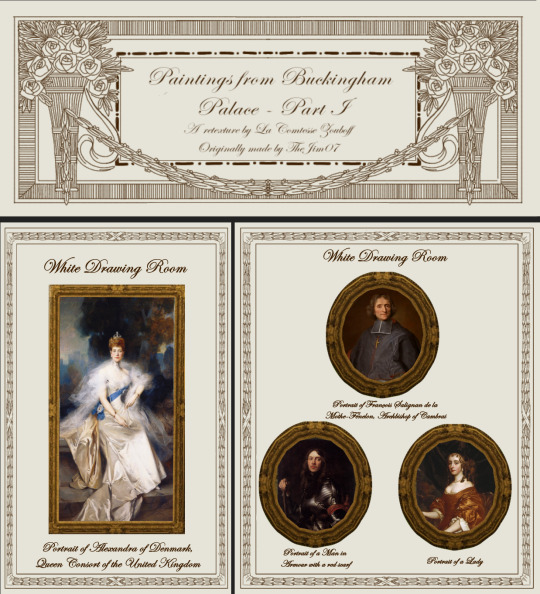
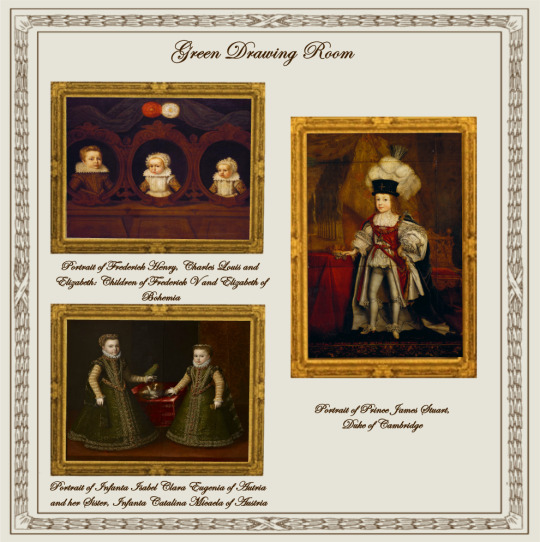
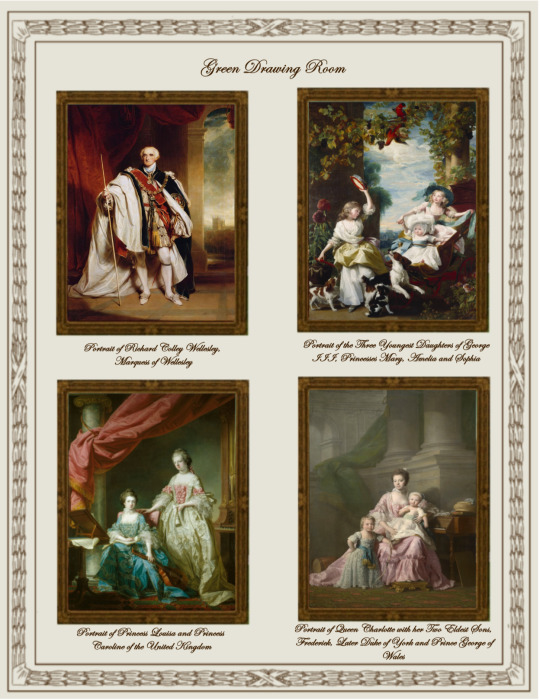
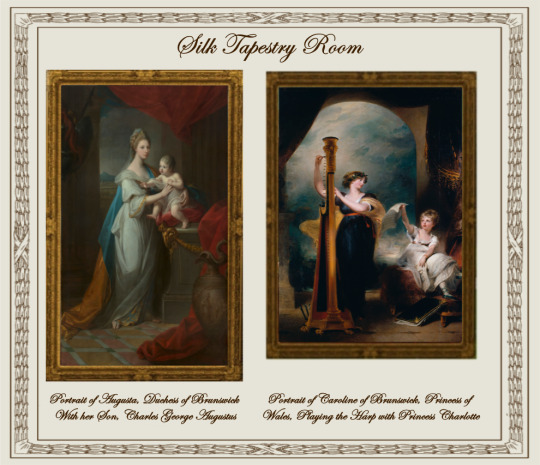
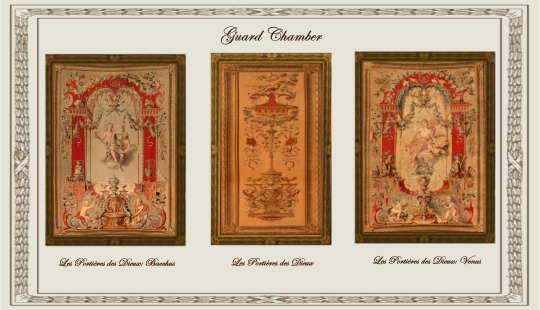
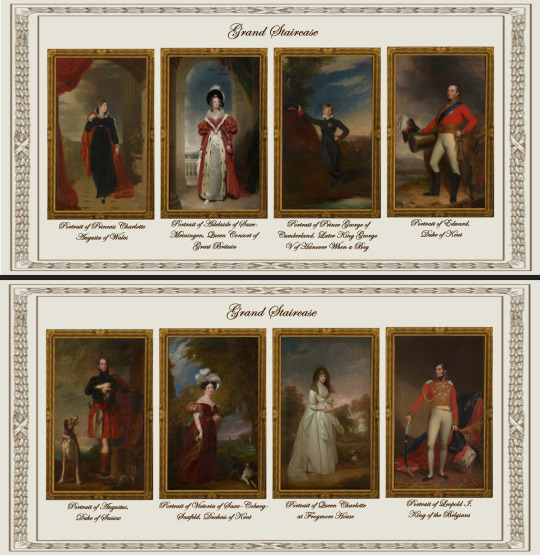
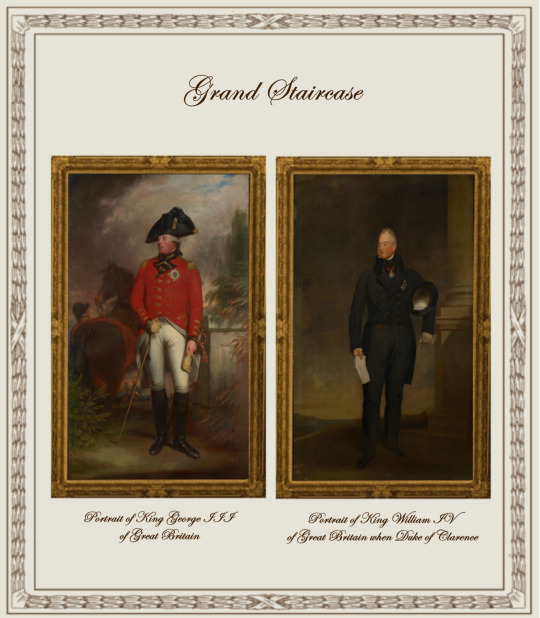
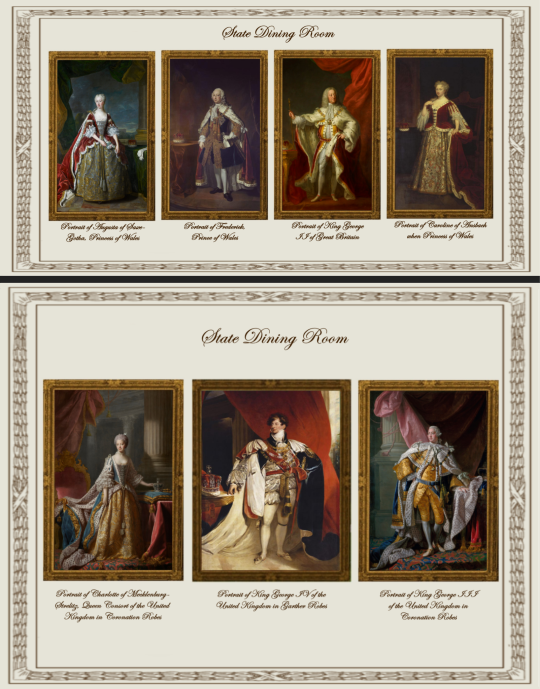
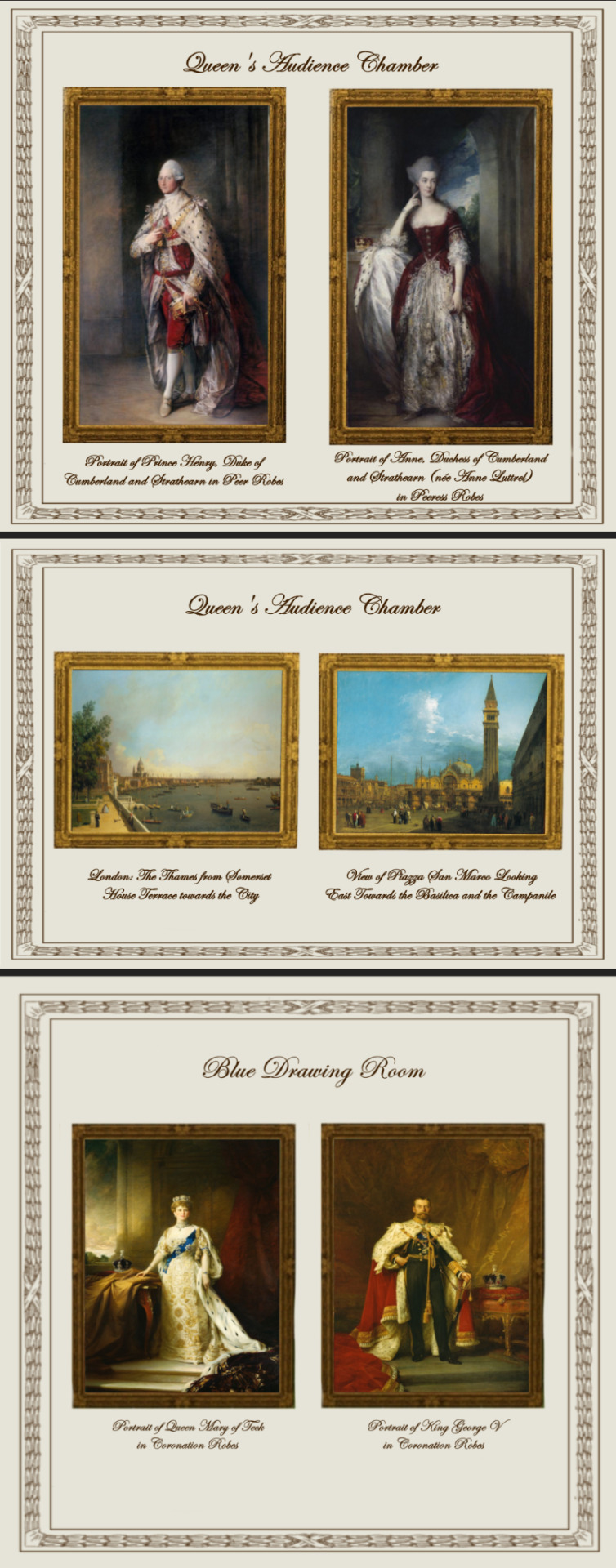
Paintings from Buckingham Palace: part I
A retexture by La Comtesse Zouboff — Original Mesh by @thejim07
100 followers gift!
First of all, I would like to thank you all for this amazing year! It's been a pleasure meeting you all and I'm beyond thankful for your support.
Spread among 13 occupied and historic royal residences in the United Kingdom, the collection is owned by King Charles III and overseen by the Royal Collection Trust. The British monarch owns some of the collection in right of the Crown and some as a private individual. It is made up of over one million objects, including 7,000 paintings, over 150,000 works on paper, this including 30,000 watercolours and drawings, and about 450,000 photographs, as well as around 700,000 works of art, including tapestries, furniture, ceramics, textiles, carriages, weapons, armour, jewellery, clocks, musical instruments, tableware, plants, manuscripts, books, and sculptures.
Some of the buildings which house the collection, such as Hampton Court Palace, are open to the public and not lived in by the Royal Family, whilst others, such as Windsor Castle, Kensington Palace and the most remarkable of them, Buckingham Palace are both residences and open to the public.
About 3,000 objects are on loan to museums throughout the world, and many others are lent on a temporary basis to exhibitions.
-------------------------------------------------------
This first part includes the paintings displayed in the White Drawing Room, the Green Drawing Room, the Silk Tapestry Room, the Guard Chamber, the Grand Staircase, the State Dining Room, the Queen's Audience Room and the Blue Drawing Room,
This set contains 37 paintings and tapestries with the original frame swatches, fully recolourable. They are:
White Drawing Room (WDR):
Portrait of François Salignan de la Mothe-Fénelon, Archbishop of Cambrai (Joseph Vivien)
Portrait of a Lady (Sir Peter Lely)
Portrait of a Man in Armour with a red scarf (Anthony van Dyck)
Portrait of Alexandra of Denmark, Queen Consort of the United Kingdom and Empress of India (François Flameng)
Green Drawing Room (GDR):
Portrait of Prince James Stuart, Duke of Cambridge (John Michael Wright)
Portrait of Frederick Henry, Charles Louis and Elizabeth: Children of Frederick V and Elizabeth of Bohemia (unknown)
Portrait of Infanta Isabel Clara Eugenia of Autria and her Sister, Infanta Catalina Micaela of Austria (Alonso Sanchez Coello)
Portrait of Princess Louisa and Princess Caroline of the United Kingdom (Francis Cotes)
Portrait of Queen Charlotte with her Two Eldest Sons, Frederick, Later Duke of York and Prince George of Wales (Allan Ramsay)
Portrait of Richard Colley Wellesley, Marquess of Wellesley (Martin Archer Shee)
Portrait of the Three Youngest Daughters of George III, Princesses Mary, Amelia and Sophia (John Singleton Copley)
Silk Tapestry Room (STR):
Portrait of Caroline of Brunswick, Princess of Wales, Playing the Harp with Princess Charlotte (Sir Thomas Lawrence)
Portrait of Augusta, Duchess of Brunswick With her Son, Charles George Augustus (Angelica Kauffmann)
Guard Chamber (GC):
Les Portières des Dieux: Bacchus (Manufacture Royale des Gobelins)
Les Portières des Dieux: Venus (Manufacture Royale des Gobelins)
Les Portières des Dieux (Manufacture Royale des Gobelins)
Grand Staircarse (GS):
Portrait of Adelaide of Saxe-Meiningen, Queen Consort of Great Britain (Martin Archer Shee)
Portrait of Augustus, Duke of Sussex (Sir David Wilkie)
Portrait of Edward, Duke of Kent (George Dawe)
Portrait of King George III of Great Britain (Sir William Beechey)
Portrait of King William IV of Great Britain when Duke of Clarence (Sir Thomas Lawrence)
Portrait of Leopold I, King of the Belgians (William Corden the Younger)
Portrait of Prince George of Cumberland, Later King George V of Hanover When a Boy (Sir Thomas Lawrence)
Portrait of Princess Charlotte Augusta of Wales (George Dawe)
Portrait of Queen Charlotte at Frogmore House (Sir William Beechey)
Portrait of Victoria of Saxe-Coburg-Saafeld, Duchess of Kent (Sir George Hayter)
State Dining Room (SDR):
Portrait of Charlotte of Mecklenburg-Strelitz, Queen Consort of the United Kingdom in Coronation Robes (Allan Ramsay)
Portrait of King George III of the United Kingdom in Coronation Robes (Allan Ramsay)
Portrait of Augusta of Saxe-Gotha, Princess of Wales (Jean-Baptiste Van Loo)
Portrait of Caroline of Ansbach when Princess of Wales (Sir Godfrey Kneller)
Portrait of Frederick, Princes of Wales (Jean-Baptiste Van Loo)
Portrait of King George II of Great Britain (John Shackleton)
Portrait of King George IV of the United Kingdom in Garther Robes (Sir Thomas Lawrence)
Queen's Audience Room (QAR):
Portrait of Anne, Duchess of Cumberland and Strathearn (née Anne Luttrel) in Peeress Robes (Sir Thomas Gainsborough)
Portrait of Prince Henry, Duke of Cumberland and Strathearn in Peer Robes (Sir Thomas Gainsborough)
London: The Thames from Somerset House Terrace towards the City (Giovanni Antonio Canal "Canaletto")
View of Piazza San Marco Looking East Towards the Basilica and the Campanile (Giovanni Antonio Canal "Canaletto")
Blue Drawing Room (BDR)
Portrait of King George V in Coronation Robes (Sir Samuel Luke Fildes)
Portrait of Queen Mary of Teck in Coronation Robes (Sir William Samuel Henry Llewellyn)
-------------------------------------------------------
Found under decor > paintings for:
500§ (WDR: 1,2 & 3)
1850§ (GDR: 1)
1960§ (GDR: 2 & 3 |QAR 3 & 4)
3040§ (STR, 1 |GC: 1 & 2|SDR: 1 & 2)
3050§ (GC:1 |GS: all 10|WDR: 4 |SDR: 3,4,5 & 6)
3560§ (QAR: 1 & 2|STR: 2)
3900§ (SDR: 7| BDR: 1 & 2|GDR: 4,5,6 & 7)
Retextured from:
"Saint Mary Magdalene" (WDR: 1,2 & 3) found here .
"The virgin of the Rosary" (GDR: 1) found here .
"The Four Cardinal Virtues" (GDR: 2&3|QAR 3 & 4) found here.
"Mariana of Austria in Prayer" (STR, 1, GC: 1 & 2|SDR: 1 & 2) found here.
"Portrait of Philip IV with a lion at his feet" (GC:1 |GS: all 10|WDR: 4 |SDR: 3,4,5 & 6) found here
"Length Portrait of Mrs.D" (QAR: 1 & 2|STR: 2) found here
"Portrait of Maria Theresa of Austria and her Son, le Grand Dauphin" (SDR: 7| BDR: 1 & 2|GDR: 4,5,6 & 7) found here
(you can just search for "Buckingham Palace" using the catalog search mod to find the entire set much easier!)
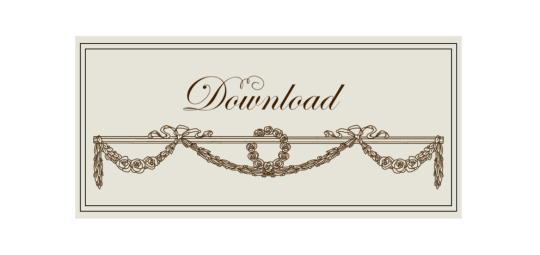
Drive
(Sims3pack | Package)
(Useful tags below)
@joojconverts @ts3history @ts3historicalccfinds @deniisu-sims @katsujiiccfinds @gifappels-stuff
-------------------------------------------------------
#the sims 3#ts3#s3cc#sims 3#sims 3 cc#sims 3 download#sims 3 decor#edwardian#rococo#baroque#renaissance#buckingham#buckingham palace#royal collection trust#wall decor
147 notes
·
View notes
Text
Alright everyone here’s a very stupid question!
Also yes. I have personally read fanfiction about every single one of these figures listed in the poll.
#the wars of the roses#war of the roses#wars of the roses#tudors#the tudors#tudor england#historical polls#Polls#tumblr poll#tumblr polls#Henry V#humphrey duke of gloucester#richard duke of york#richard plantagenet#Edmund duke of Somerset#Edmund Beaufort#Henry VI#margaret of anjou#edward iv#George Plantagenet#george duke of clarence#richard iii#Henry viii#thomas cromwell#thomas more
135 notes
·
View notes
Text
As noted when discussing smell, there was a significant change to the trade in cosmetics in the fourteenth and fifteenth centuries, with increasing numbers of finished products reaching the market in England. Among these were sweet powders, such as citrinade, a confection made of sugar and citron, the precursor of the lemon, that was applied to the face as a whitener. They were expensive: witness a group of purchases of sweet powders - two pots each of succade, coinade (made with quince), citrinade and pomade for 37s. 8d. - shipped out of London to Rouen for the use of either Margaret, Duchess of Clarence, or her husband, in 1420-1.
C. M. Woolgar, The Senses in Late Medieval England
#the idea of thomas being like 'yes i need some foundation. colour match me' is cracking me up#margaret holland duchess of clarence#thomas duke of clarence#historian: c. m. woolgar
15 notes
·
View notes
Text
DA3 trailer
A speculative ramble. A warning that I talk too much but I believe some of what I have to say may even be interesting. I'm quite proud of some of it.
Firstly, it appears that the colour grading of this film will be much improved on DA2. It is less orange. Literally everyone looks better. Presumably. We did not see Thomas. I went frame by frame. I know he's there somewhere. We have photos from a filming day that isn't featured in the trailer. It cannot be ruled out that he is only in one scene. I wanted Thomas time :(
Mary looks good, I like her hair.
Edith looks good, the pink is incredible on her.
Literally everyone looks good. This is why things aren't usually orange. Why did they do that for DA2
There is a split second shot of the outside of the Richmond Theatre, and another of the interior. I know that theatre. I like it. My initial thoughts are this movie was made for me. I love London theatres.
They're pretending it's in Piccadilly Circus (Eros Statue, advertising board for Bovril and Schweppes Tonic) which is fine and cool because it makes sense.
Just a five minute walk from the Theatre Royal Haymarket where Dominic West was in A View From The Bridge during the filming of DA3. I saw it. It was good I just don't like watching dramatic plays. My favourite thing I saw last year was actually Backstairs Billy (with Penelope Wilton) so I suppose if they really wanted to make this film for me they'd have set things in the Duke of York's.
I like how this scene looks I think. Better than the Lights and scaffolding at any rate. I also like the classic bus. I won't pretend to know what it is but I love a guy jumping onto the back of a moving bus.
Possibly actually they want you to think Richmond Theatre is along Shaftesbury Avenue or St Martin's Lane or (very unlikely) the Strand. It doesn't matter either way this is for sure only of interest to me. Can't wait to be proved wrong in September.
The show on in Richmond-Not Richmond Theatre is 'Bitter Sweet', which is presumably also the play we see Guy speak in on the next shot, rather than the 1929 Coward Operetta staged in His Majesty's Theatre, which is located opposite the Haymarket and couldn't be used for filming because it's massive and putting in PotO 8 times a week. Maybe it is the Coward Operetta actually. That's just the kind of thing Fellowes would do.
Actually I looked it up. It's exactly a line from it. I won't say more but in real time I was absolutely correct. They want you to think Richmond Theatre is His Majesty's Theatre which I think means I finally have to face my fear of seeing PotO.
The white house Mary enters is like. On The Mall and just around the corner from the house used as Grantham House. Just separated by Clarence House. Can't imagine these specific bits of information are anything to do with anything but it's the type of thing I like to know. Again, I feel like this movie is made for me.
There's paparazzi and a red carpet, clearly this is related to some kind of celebrity event. Mary in the lovely red dress and.. a tiara. Which feels like it might be on the nose. Obviously DA2 borrowed from Singing in the Rain and idk this makes me think of Grace Kelly or something. this is not my area of expertise. hoping it's something more interesting.
Back to the opening scene of the trailer:
I will admit I have no interest in horse racing or that entire element of high society I sincerely hope this scene ends up being brief and unimportant xx
Although if Carson is doing any level of announcement for it maybe its more of an unseen Crawley affair.
1930 is good (and previously known information) bc the economy is in shambles (a favourite passtime of the DA canon) and also bc the government is in shambles (Nat Lab coalition) In fact, 1930 is the year PM Ramsay MacDonald wrote the quote ascribed to him on the gov uk list of past Prime Ministers (“We hear war called murder. It is not: it is suicide.”) I can't imagine this has much to do with anything either but I'd be most impressed if it does.
The dancing is cute I guess. Clearly a daytime thing. I believe the press release mentioned 'many other fan favourites' who we are yet to see in this trailer. The vast majority of series regulars were named in the DA3 announcement so I think it's unlikely they do anything cool with it.
Not sure what Daisy's so happy about but I hope it's not a baby. Sorry.
So glad Hugh Bonneville is back in his Paddington's Dad era, he looked jaundiced as hell the last go around
Carson not only announcing a clearly significant horse event but back in the Butler's livery which I guess is interesting in that his palsy that necessitated his retirement is cured and also that they couldn't externally recruit or internally promote once Thomas left. Perhaps Carson is doing it for free for room and board. Indentured servitude <3
For sure they're downsizing staff, a thing that is alluded to on a national level even in the series.
Mary appears to be flat hunting, I don't know where exactly but if it's anywhere in Zone 1 (it will be) I'm sure I'll find it soon.
Probably some symbolism to the drone shot of the house at sunset. Unless it's not sunset and also like. the opening shot of the movie. But I've said something about it now so I feel at peace
They can't help it because of how time works but I feel I want to say something about the ages of the children. George is at best 9 and the boys who played him were 13 at filming. It doesn't matter and it couldn't be helped but I find it so distracting. To think in canon like 5 years earlier George is sweet enough to share his orange with Barrow
I had been concerned this film would split its attentions with goings on in America, but this doesn't seem to be the case.
Literally the only way they could make this more geared to my interests is by having the involvement of the personified National Trust but they can't do that because I don't think they'll get rid of the Abbey. mainly because it's an objectively and genuinely quite cool part of Highclere's history but also because they need the house because George Crawley comes of age directly into WW2 and I think the natural progression of the Crawley family curse is for him to get shot down over the channel returning to Britain (I imagine him to be a gentleman pilot, something about engines and absentee stepfathers or something) leading to another S1 style succession crisis. And only then does the Abbey get released from the clutches of the Crawleys as the title gets absorbed back into the Crown or something idrc
I warned you.
9 notes
·
View notes
Text
Love is a Knife (5833 words) by BloodiedRose Chapters: 1/? Fandom: 15th Century CE RPF Rating: Teen And Up Audiences Warnings: Creator Chose Not To Use Archive Warnings Relationships: Henry IV of England & Henry V of England, Lancasters Characters: Henry IV of England, Henry V of England, Thomas Duke of Clarence, John of Lancaster 1st Duke of Bedford, Humphrey of Lancaster Duke of Gloucester, Blanche of England (1392-1409), Philippa of England (1394-1430), Joan of Navarre Queen of England Additional Tags: Alternate Universe - Modern Setting, Family Drama, Suicide Attempt, Implied/Referenced Suicide, Implied/Referenced Child Abuse, Family Feels Summary: The dagger incident: a modern AU.
5 notes
·
View notes
Note
Now that the Histories Ficathon is over I'm making good on my threat/promise... please assign the Lancasterlings (and their spouses, if you want) a prehistoric creature to go alongside Thomasaurus Rex.
yes...haha yes! 😈
this got long so under the cut:
Henry V:
Okay hear me out- we keep keep the swan theme and connection to Mary and her family as strong, tight throughline also I love the idea of Hal beating up people aggressive-swan-style. But- hear me out- bigger. So I'm thinking the giant Pleistocene swan Cygnus falconeri. It's a beautiful morning in France, and you are a horrible swan.
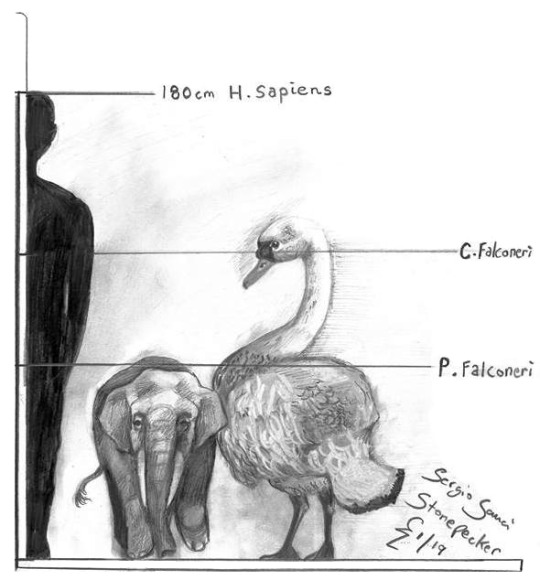
Artist: Sergio Gauci
Given Henry VI may have gotten his panther badge from his mom, may I also propose for Catherine de Valois the Eurasian extinct giant cheetah species Acinonyx pardinensis?

Artist: Velizar Simeonovski
Thomas, Duke of Clarence:
Obviously a T. rex, but I'm gonna stick this bit in from Brusatte's The Rise and Fall of the Dinosaurs to show how perfect that choice is 🤌✨

I admittedly know very little about Margaret Holland, but I was kind of compelled by how her children from her first marriage were kept in her and Thomas' household...that and Margaret wanting her book of hours to prepare her to "always be redy to dye," reminds me of the oviraptorid fossil that died and was preserved in position of protecting its eggs. Something about that as a parallel to her being buried alongside both her husbands too....
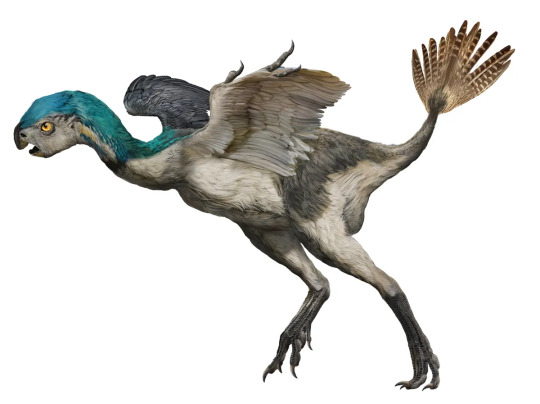
Artist: Zhao Chuang
John, Duke of Bedford:
Maybe it's because he himself seemed constantly stressed and running around doing some sort of assignment, and in the plays it's sometimes played as if he dies from sheer exhaustion, but I kind of like the idea of a beardog like Ischyrocyon or Amphicyon. The beardogs were famously generalists in hunting and in both of the above genera, it's hypothesized they may have been persistence hunters.
youtube
Also voting for Anne of Burgundy as an alvarezsauroid like Mononykus or Shuvuuia, which have been compared to nocturnal avian hunters like owls 🤎🤍
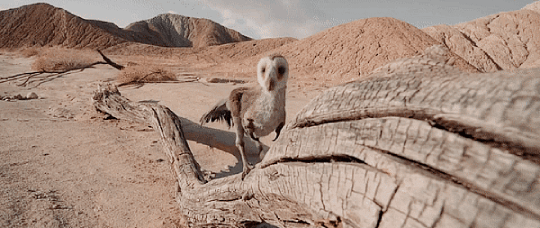
Humphrey, Duke of Gloucester:
So a guy having a pretty productive relationship to his family (not perfect, but pretty good compared to others I could name...) trying his best to be an actual protector of his relative's kid, having a lot of relationship drama, and also getting into spats with people reads as very ceratopsian to me lmao. To de-fang him a just a little, I'm going with Kosmoceratops. Those folded horns on the top edge of the frill and side-facing brow horns probably aren't going to help you that much at Agincourt, but I'm sure that pretty lady from Cobham thinks they're fire 👍

Artist: Lukas Panzarin
Speaking of: I like the idea of Eleanor of Cobham maybe being assigned with some sort of plesiosaur? Sort of bridging the siren to mermaid to modern creature of our mythical imagination Nessie pipeline :)

Artist: James Kuether
For Jacoba, Smilodon. They're smart and fierce so fitting. Also what she deserves ❤️🔥

Artist: Mehdi Nikbakhsh
Blanche:
Unfortunately I couldn't find a whole lot on her, but that sort of elusive energy kind of reminds me of Coelurus fragilis, a possible Jurassic relative of the tyrannosaurs, but not much is known about their evolution or ecology. That and it being a more gracile and swift-footed creature kind of has Blanche vibes to me 🤍
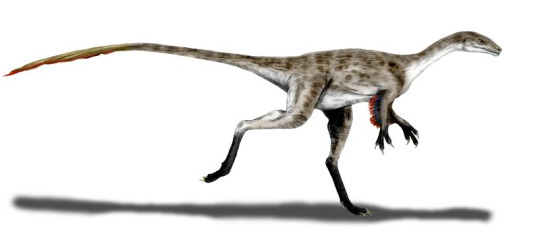
Artist: Nobu Tamura
Ludwig deserves nothing and gets nothing bye
Philippa, Queen of Denmark, Sweden, and Norway:
I know in the fic poor Philippa seems pretty freaked out by Thomasaurus' size, but I'm partial to her being a big death lizard too– maybe like those coming-of-age mermaid stories but she's...bigger and teeth-ier 😅. For a similar reason to seeing what Thomas would do at Baugé, I'd like to see Philippa defend Copenhagen as a Mosasaurus hoffmannii. Let's see the Hanseatic League try to get past THIS 🫡 min dronning 🫡

I like the idea of Erik also being associated with something aquatic though maybe not as intimidating as Philippa...maybe an early whale relative like Dorudon?

Artist: David Arruda Mourao
7 notes
·
View notes
